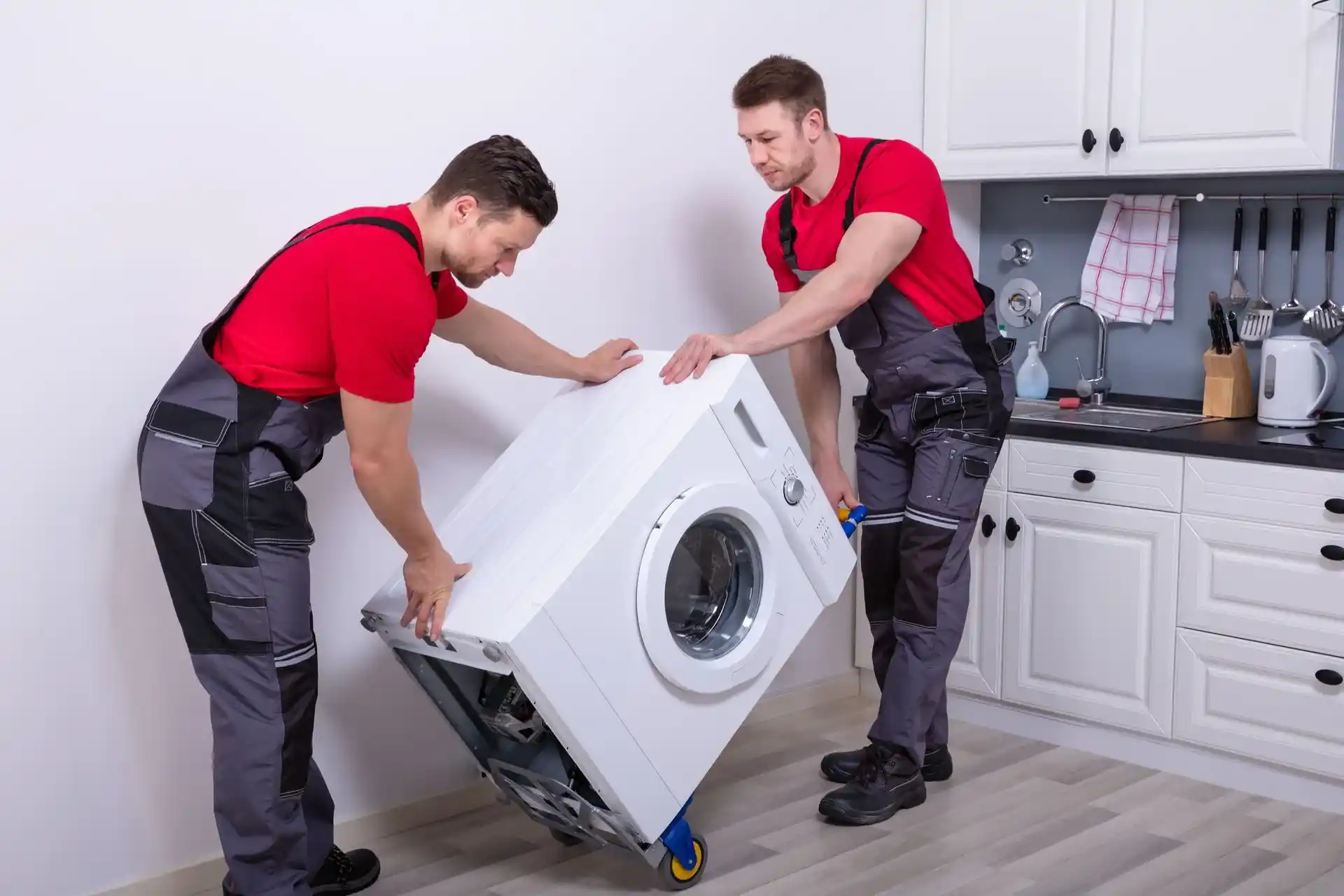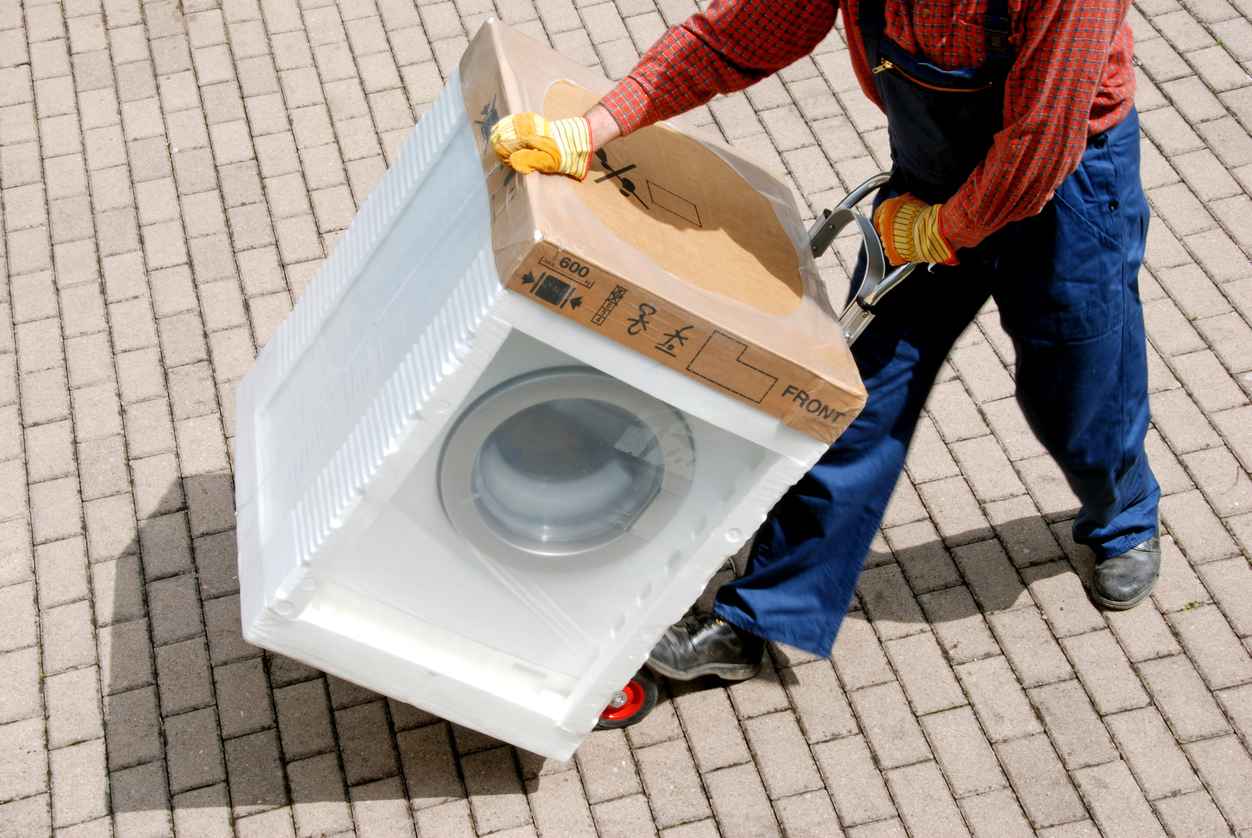Although it is convenient to call professionals to move your washing machine if you want to change its location or move to a new property, it will be expensive. This cost can be saved if you move the washing machine yourself, requiring you to have complete knowledge regarding how to move it safely.
This guide provides a detailed procedure for preparing, moving, and installing a washing machine to make the move easy and safe for you.
Stages of Moving a Washing Machine
The process of moving a front-load model or a top-load model washing machine comprises these stages that help make moving easier for you:
Stage 1: Preparation
- Get two helpers, such as any friend or family member, who can give you a hand and ensure the move is safe.
- Check the manufacturer’s provided manual to know the recommendations for transporting the washing machine.
- Find the shipping bolts/washer locks of your washing machine that help to keep the drum stabilised and immobilised during transportation, saving it from potential damage which might be caused due to excessive vibrations or sudden jerks.
- Arrange an appliance dolly to move the machine out of your property and load it into the moving vehicle.
- Secure all the essential supplies to move your washing machine, such as furniture blankets, a small bucket, a pair of slip-joint pliers, rope or moving straps for protecting the washing machine, catching the drain water, disengaging the drain hose, and securing the washing onto the dolly respectively.

Stage 2: Moving the Washing Machine
- Make the washing machine empty by taking out any clothes present inside it.
- Run the shortest normal wash cycle with water only to clean the detergent residues from its drain lines and drum.
- Leave the washing machine’s door open for almost 24 hours and allow the drum to dry completely.
- Turn off the washing machine’s power by unplugging its switch from the electrical socket.
- Turn off the water supply by locating the water valve, which is usually present at the back of the washing machine.
- Use the slip-joint pliers to disconnect the cold and hot water supply hoses one by one and drain water from the washing machine.
- Keep the hose upright to prevent water spills, and empty it into the bucket.
- Disengage the hoses which supply hot and cold water to the washing machine by using pliers and placing them into a plastic bag.
- Disconnect the drain hose of the washing machine from the drain hose leading towards the wastewater canal and empty the remaining water into a bucket.
- Secure the washing machine’s drain hose in the holding bracket or tape it safely to the back of the appliance to keep it attached.
- Clean the washing machine thoroughly to remove any mould or mildew growth.
- Insert the transit bolts in the washing machine’s rear side to secure the washer drum.
- Take a piece of tape to secure the power cable behind the washing machine unit, eliminating the risk of the cable’s dangling or tripping.
- Wrap the washing machine in thick furniture blankets, keeping them in place with rope or tape to avoid accidental hits or scratches.
- Tip the washer backward to create enough space with your helpers and slide the appliance dolly.
- Secure the washing machine onto the dolly by using rope or straps.
- Ensure the washing machine is balanced on its rubber wheels.
- Move the dolly with the washing machine in an upright position out of your property to load it into the moving van.
- Utilise the moving van’s loading ramp for loading the washing machine.
- Use rope or straps for strapping the washing to a side of the van to avoid its moving or shifting during transit.

Stage 3: Re-Installation Stage
- Lose the transit bolts by unscrewing and removing them once the washing machine has reached its new location.
- Keep the washing machine on a levelled surface to avoid the risk of movement or shaking while it operates.
- Connect the inlet hose and reconnect the water supply hoses to the washing machine unit.
- Insert the hose’s end into the drain outlet to secure it in the right place.
- Plug the washing machine’s power cord into the electrical socket and turn on the power supply.
- Run a washing machine cycle with an empty load to ensure it functions appropriately.
